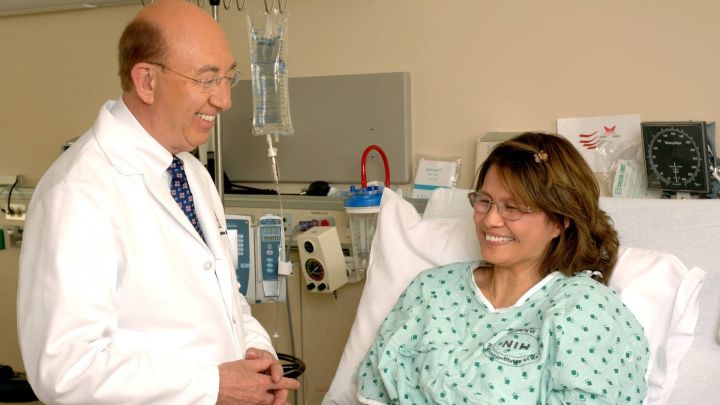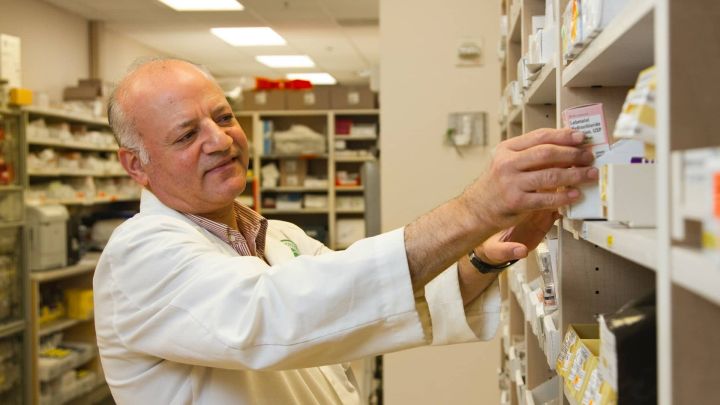Founded in 1948, Sheba Medical Center is the largest and most comprehensive medical center in Israel and even in the Middle East. It is also the first medical center in Israel to provide patients with artificial hearts and the first test tube baby birth. This tertiary hospital affiliated to Tel Aviv University involves almost all specialties. Its obstetrics, gynecology, pediatrics, neonatology, rehabilitation and other specialties enjoy high reputation internationally, It provides services to more than 1 million patients every year,
More than 25% of Israel's medical clinical research is conducted in the Sheba Medical Center, which also cooperates with almost all Israeli medical institutions to provide medical education and promote the future development of the medical profession.
The cheers of the founding of Israel in 1948 had not yet subsided, and the whole country fell into the black smoke of the Middle East war. In the same year, Sheba Medical Center (hereinafter referred to as "Sheba") was established in a series of abandoned military camps to rescue the wounded. In the dusty meeting, the conditions for the establishment of Sheba Hospital were not optimistic.
Heroes emerged in troubled times. Sheba kept accumulating development strength under the special historical background, and finally Nirvana became the phoenix of medical innovation. Today's Sheba stands on the "high ridge" of the medical profession.
First of all, from the perspective of ranking, Sheba is not only the most leading medical center in the Middle East, but also rated as the "Top Ten Best Hospitals in the World" by Newsweek, and has been in the forefront for three consecutive years.
Secondly, in terms of scale, Sheba is the largest and most comprehensive medical center in Israel and even in the Middle East, with 150 departments and clinics, involving almost all specialties, including obstetrics, gynecology, pediatrics, neonatology, rehabilitation and other specialties, which enjoy high reputation internationally.
Finally, Sheba's scientific research strength should not be underestimated. The hospital is one of the most important research centers in Israel. Its scientific research achievements include TIL immunotherapy for metastatic melanoma, Olaparib Olapa, a targeted drug for pancreatic cancer, Phase III clinical trial of the world's first hemophilia "gene breakthrough therapy", coronavirus remote medical treatment project, etc.
The ecological model of "scientific research clinical teaching training"
Sheba has taken the lead in the comprehensive development of scientific research, clinical, teaching and training of modern medical centers.
It is worth mentioning that these three are closely linked, forming a complete and healthy ecology, and firmly laying the foundation for medical innovation and transformation.
First, real cases are hotbeds for scientific research. According to statistics, Sheba provides medical services for more than 1 million patients every year and is engaged in at least 25% of medical research projects in Israel. It is the considerable number of cases that promote the close combination of clinical treatment and medical research in hospitals.
Secondly, the "satiety" effect of scientific research fruits is that scientific innovation drives development. In addition to participating in more than 5000 innovative projects, Sheba Medical Center has also developed new drugs, treatment methods and technologies with the biotechnology and pharmaceutical industry through international cooperation. Johnson&Johnson, Roche, Pfizer, MSD, Novartis and other world-class medical technology companies and pharmaceutical enterprises have maintained long-term and in-depth cooperation with Sheba.
At the same time, scientific research projects also bring huge benefits to hospitals. It is reported that in 2011, Sheba ranked first among the research income of Israeli hospitals, which was NIS 42.4 million (equivalent to RMB 84 million).
Finally, education and training is the source of talent innovation, and also the source of strength to drive the entire medical innovation. In 2012, Dr. Zadis, who was then the deputy director of Sheba Hospital, believed that "talent is the source of innovation, and the future competition is mainly talent competition." Therefore, Sheba Medical Center attaches great importance to training and retaining talents.
Sheba Medical Center relies on Tel Aviv University to import excellent talents to the hospital. Many doctors in the hospital are members of the medical department of Tel Aviv University. In addition, Sheba also selects 6-7 young academic elites every year to sign a 10-year work contract with them. They will receive a total funding of 70000 dollars. On the one hand, they will go to the best universities and research institutions in the world to study further, and on the other hand, they will participate in the team training program to develop their management ability.
Build a bridge between hospital and market
Before talking about the internal medical innovation and transformation mechanism of Sheba, we should also pay attention to the "green environment" created by the national government for medical innovation. It is reported that the annual medical investment of the Israeli government accounts for about 8% of the total financial budget.
In addition to investing a lot of real money and silver, the government has also taken a series of measures such as setting up the National Science and Technology Innovation Bureau, promulgating the "Angel Law", implementing the "National Science and Technology Incubator Plan" to promote the prosperity of the medical industry, and the Sheba Medical Center has also benefited greatly.
The incubation system of "scientific research clinical teaching training" helps Sheba Medical Center transform from weak to strong. However, how to achieve the take-off of medical innovation and transformation depends on the wings that can drive the wind of medical innovation business value, namely, the implementation of digital health strategic policies and ARC partner innovation projects.
First of all, the left wing is a digital health strategic policy that acts as an "information base". Through its strong innovation ability and advanced scientific and technological level, it is committed to using communication technology to improve health care services. Digital health strategy has five dimensions:
First, establish a national digital health strategy, build a top-level framework at the national level, and support the Ministry of Health to perform its corresponding responsibilities. Establish a sharing mechanism for health and management information exchange to support and promote online diagnosis and treatment, personalized medicine, continuous medicine, health management decision-making, etc.
Second, after years of data collection, residents' health information is interconnected. The domestic electronic medical record basically covers all residents, and the information is stored in various health maintenance organizations and medical institutions. As long as you enter the National Health Information Exchange (HIE) platform, you can realize the sharing of diagnosis and treatment data.
From the previous two dimensions, the digital health strategy has basically reached the standard of its "information base". A large amount of information is the first step to launch ARC innovation projects, that is, to find scientific research in clinical practice
Third, all medical services are computerized and networked, and the whole process from obtaining outpatient information to making appointments, consulting, prescribing and referral is informationized.
Fourth, attach importance to strengthening information security and privacy protection of residents, and strengthen the construction of digital health laws and regulations.
Fifth, establish a professional organization system for cross departmental coordination, pay attention to the role of entrepreneurs and technology companies, and carry out the "Challenge Bidding Plan". The winning digital solutions are funded and promoted by the Ministry of Health.
Secondly, the right wing is the ARC Partner Innovation to Redesign Healthcare and Collaboration with Partners, which builds a bridge between hospitals and markets. Sheba Medical Center has joined this innovation project with many other hospitals in Israel and around the world, mainly through regular meetings with the hospital's medical team to collect doctors' ideas, needs and exchange the latest projects and achievements, so as to achieve the goal of The purpose of cooperation between startups and large companies in information and other fields.
In order to turn the idea into reality, the Center will issue a grant worth 50000 dollars every year to support innovation projects. Any department of a hospital can apply for a grant if they propose innovative solutions to specific problems and help improve care and treatment.
When the project is mature in the laboratory and will return to the clinic, the center also provides proof of concept for the technology of partners, bringing their innovative technology into the medical practice of hospitals and clinics.
This process was designed in cooperation with the medical department and supervised its implementation. If the pilot experiment is successful and the goal set at the beginning is achieved, and the technology is valuable to the hospital, the hospital and the start-up company have reached a partial agreement that they allow the hospital to use their solution free of charge for the first 2-3 years.
In addition to the use of technology, start-ups also need to pay the pilot fees, and hospitals require to charge a small portion of royalties for jointly developed products.
Take Ventor Technologies as an example. A new type of heart valve developed by Ventor Technologies can be implanted through catheterization instead of open heart surgery in Sheba. In 2009, Medtronic spent 325 million dollars to acquire interventional aortic valve products (TAVR) from medical device manufacturer Ventor Technologies (transapical), of which about 10% was used in Sheba Medical Center.
In addition to the close relationship with the company, ARC also plays an active role in the project with the Ministry of Health and the Ministry of Finance, which aims to design a more active regulatory infrastructure for digital medical companies, which is also one of the tasks planned by the Israeli Association of Digital Medical Companies.
As far as the financing is concerned, the innovative projects of ARC partners have largely promoted the commercialization of Sheba's innovation. In 2021, six companies of ARC Innovation Center raised more than 110 million dollars. Sherpa related startups have raised more than $1 billion over the past decade.
In general, the reason why Sheba can walk in the forefront of medical innovation and transformation is that the ecological model of "clinical - scientific research - education and training" implements medical services, medical innovation and medical talent training. Secondly, it also benefits from the digital health strategic policy and ARC partner innovation project to integrate case information into innovative ideas and projects to promote the market.







